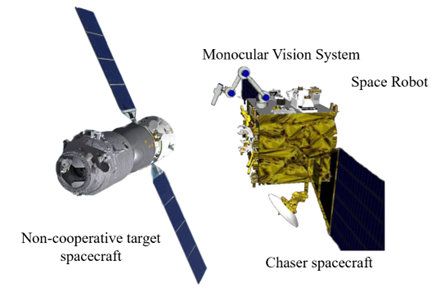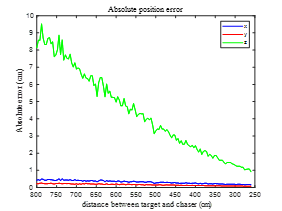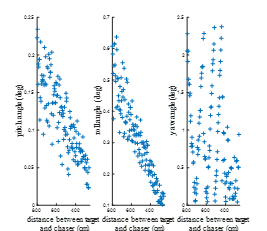Autonomous in-orbit services extend the service life and functionality of satellites, platforms, space station modules, and space carriers through intelligent service spacecraft. Research into autonomous in-orbit service technology will reduce the operating costs of spacecraft and promote the sustainable development of the aerospace industry. The development of autonomous positioning and navigation systems for independent spacecraft is a primary focus of research for its theoretical and practical significance.

Schematic of the tracking of independent capture spacecraft
Currently, independent target positioning sensors are divided into three categories: monocular cameras, binocular cameras, and lidar technology. Among these, positioning systems using monocular cameras can only capture specific structures on the surface of the target spacecraft, such as rectangles, triangles, circles, or other objects with known geometric features and dimensions. Among these features, the star-shaped docking ring and engine nozzle are captured as circles, the spacecraft antenna as a triangle, and the solar panel and satellite body as rectangles.
Researchers at the Beijing University of Aeronautics and Astronautics proposed a positioning method based on the characteristics of the target structure to autonomously navigate relative to the target.

NOKOV motion capture cameras arranged above the test site for data capture
To test their algorithm, the researchers conducted ground-based experiments. A robotic arm equipped with the vision sensor took the place of a service aircraft, while another robotic arm loaded with a model spacecraft acted as the target spacecraft, allowing both “spacecraft” to have six directions of motion. Real-time positioning data was recorded by the NOKOV motion capture system.

Capturing target position in real time with a NOKOV motion capture system
During the experiment, the target spacecraft performed rotational and translational movements while the service spacecraft tracks the movements visually through a sensor then calculates the position of the target using the position estimation algorithm. The sub-millimeter positioning accuracy of the NOKOV motion capture system enabled it to record the actual position data of the target.

Position solution error plot

Attitude solution error plot
This experiment compared the position derived by the position estimation algorithm with the actual position provided by the NOKOV motion capture system and verified the validity and accuracy of the algorithm. An analyses of the experimental results shows that the position error is less than 10 millimeters, while the rotational error is less than 2.5°, thus confirming the viability of the algorithm.
Bibliography: